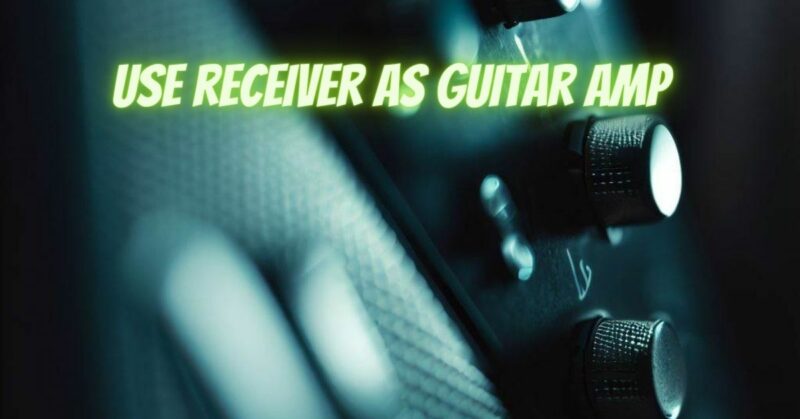If you’re a musician and love experimenting with your sound, you may have wondered if you can use your home audio receiver as a guitar amp. Receivers are typically used for home theater setups or powering speakers for music playback. While they serve a different purpose than dedicated guitar amplifiers, it is indeed possible to connect your guitar to a receiver and get sound output. In this article, we explore the possibilities and limitations of using a receiver as a guitar amp, along with some considerations for achieving a playable sound.
Using a Receiver as a Guitar Amp:
Receivers, also known as AV receivers or stereo receivers, are designed to process audio signals from various sources like Blu-ray players, TVs, or streaming devices and deliver them to connected speakers. They are equipped with amplification circuits to power speakers and often have multiple input options.
Connecting Your Guitar:
To connect your guitar to a receiver, you will need a few essential components:
- Preamp Pedal: Since guitar signals are weaker than line-level signals that receivers are designed to handle, using a preamp pedal can boost the guitar signal to an appropriate level for the receiver’s input.
- Effects Pedals: If you want to shape your guitar’s tone and add effects like reverb, delay, or distortion, you can connect effects pedals between your guitar and the preamp pedal.
- Adapter or Cable: You’ll need an adapter or cable to connect the output from your preamp pedal to one of the receiver’s input options (usually RCA or 3.5mm).
Considerations and Limitations:
While using a receiver as a guitar amp can be a fun experiment, there are some considerations and limitations to keep in mind:
- Tone Shaping: Receivers lack the specialized tone controls and circuits found in dedicated guitar amplifiers, which may limit your ability to shape your guitar’s tone.
- Speaker Configuration: The receiver’s speaker configuration may not be optimized for reproducing the full range of guitar frequencies, which can affect the overall sound.
- Effects Loop: Most receivers don’t have dedicated effects loops, which can impact how effects pedals interact with the overall sound.
- Volume and Distortion: Achieving desired levels of volume and distortion commonly associated with guitar amplifiers may be challenging with a receiver.
Using a receiver as a guitar amp can be a creative experiment, allowing you to explore new soundscapes and utilize your existing audio setup in unconventional ways. While it may not offer the same level of tonal control and guitar-specific features as dedicated guitar amplifiers, it can be a fun way to get different sound textures and effects. However, for serious guitarists seeking the best tone and performance, dedicated guitar amplifiers are still the ideal choice. Embrace the spirit of experimentation and see where your musical journey takes you. Happy playing!


